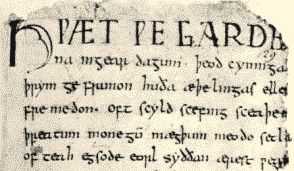Уӕ райсом хорз
One of the issues I have with most English-Language materials for studying Ossetian is that they are all written for academic papers. To properly understand these papers one must also be fluent in the IPA in order to grasp said language. Using the IPA table, the Ossetian 'ӕ' is written as 'ɐ', whereas the intended IPA corollary is 'ə'; the IPA's 'ɐ' is Ossetian's 'А', as in "Ахуыргонд ысси" - '(he) became learned. See now I'm translating two languages! If you would like to see the English IPA chart, I have posted it on this site under the Fundamentals chapter. That being said, lets begin!
Here are the basic Cardinal Numbers:
иу - One
дыууӕ - Two
ӕртӕ - Three
цыппар - Four
фондз - Five
ӕхсӕз - Six
авд - Seven
аст - Eight
фараст - Nine
дӕс - Ten
Note for 11 to 19: These numbers are created by compounding(putting together) the appropriate number + the number 10, with connecting morphemes and root changes that require focus.
иуӕндӕс - Eleven (the 'ӕн' here is a 'connecting morpheme' as mentioned above).
дыууадӕс - Twelve (here you can see what I mean by 'root change', the letter at the end of 'дыууӕ' changes from 'ӕ' to 'а', before having the 'ten' added, so keep that in mind for future learning).
ӕртындӕс - Thirteen
цыппӕрдӕс - Fourteen
фынддӕс - Fifteen
ӕхсӕрдӕс - Sixteen
ӕвдӕс - Seventeen
ӕстдӕс - Eighteen
нудӕс - Nineteen
дыуын - Twenty
Notes for larger numbers: Iron Ossetian uses a hybrid of two systems for generating larger numbers; decimal and vigesimal, allowing for several options when articulating numerals. Decimal is the way we are used to in English, but the Vigesimal system is alien to most English speakers (unless they understand a language that uses it, such as French). Vigesimal numeric systems uses concepts based on the number '20' to express larger numerals.
For example, let's use the number '35', it can be written two ways:
In the Decimal system - ӕртын фондз (thirty + five)
In the Vigesimal system - фынддӕс ӕмӕ (у)ссӕдз (fifteen and((and='ӕмӕ')) twenty)
As I understand it, either system is acceptable, and their seems to be no standard that constantly applies to situations where you might use one or the other.
Decimal Large Numbers:
ӕрты - Thirty
цыппонр - Fourty
фӕндзай - Fifty
ӕхсай - Sixty
ӕвдай - Seventy
цыппары-ссӕдзы - Eighty
нӕуӕдзӕ - Ninety
сӕдӕ - One Hundred
дыууӕ сӕды/дыууӕ сӕди - Two-Hundred
ӕртӕ сӕды/ӕртӕ сӕди - Three-Hundred
Vigesimal Large Numbers (by twenties):
ссӕдз/инцӕй - Twenty
дӕс ӕмӕ ссӕдз/дӕс ӕма инцӕй - Thirty (lit. 'ten
and twenty')
дыуиссӕдзы/дууинцӕй - Fourty (lit. two twenty)
дӕс ӕмӕ дыуиссӕдзы/дӕс ӕма дууинцӕй - Fifty
ӕртиссӕдз/ӕртинцай - Sixty
дӕс ӕмӕ ӕртиссӕдз/дӕс ӕма ӕртинцӕй - Seventy
цыппарыссӕдзы/цыппаринцай - Eighty
дӕс ӕмӕ цыппарыссӕдзы/дӕс ӕма цыппаринцӕй - Ninety
фондзыссӕдз/фонджинцӕй - One Hundred
*Four-Hundred to Nine-Hundred follow the same pattern. Also worth nothing is the fact that the suffix(es) added to the number hundred, 'ы' and 'и' respectively, are only added if no other numerals follow it, in the sentence.
мийн/мин - One Thousand* (Which is a Turkic loanword)
*Multiple thousands are expressed as 'Cardinal Numeral' + 'Thousand' (The same as in English).
- цыппар мийн - Four Thousand
*Complex numerals are written in the format thousands -->hundreds ->tens ->ones, '2239' is written as 'дыууӕ мийн дыууӕ сӕды ӕрты фараст', using the Decimal system.



_-_First_Ancient_Greek_.jpg)



How is going on your study?
It seems you really into it, cause without a lot of material you trying to find something, it is great.